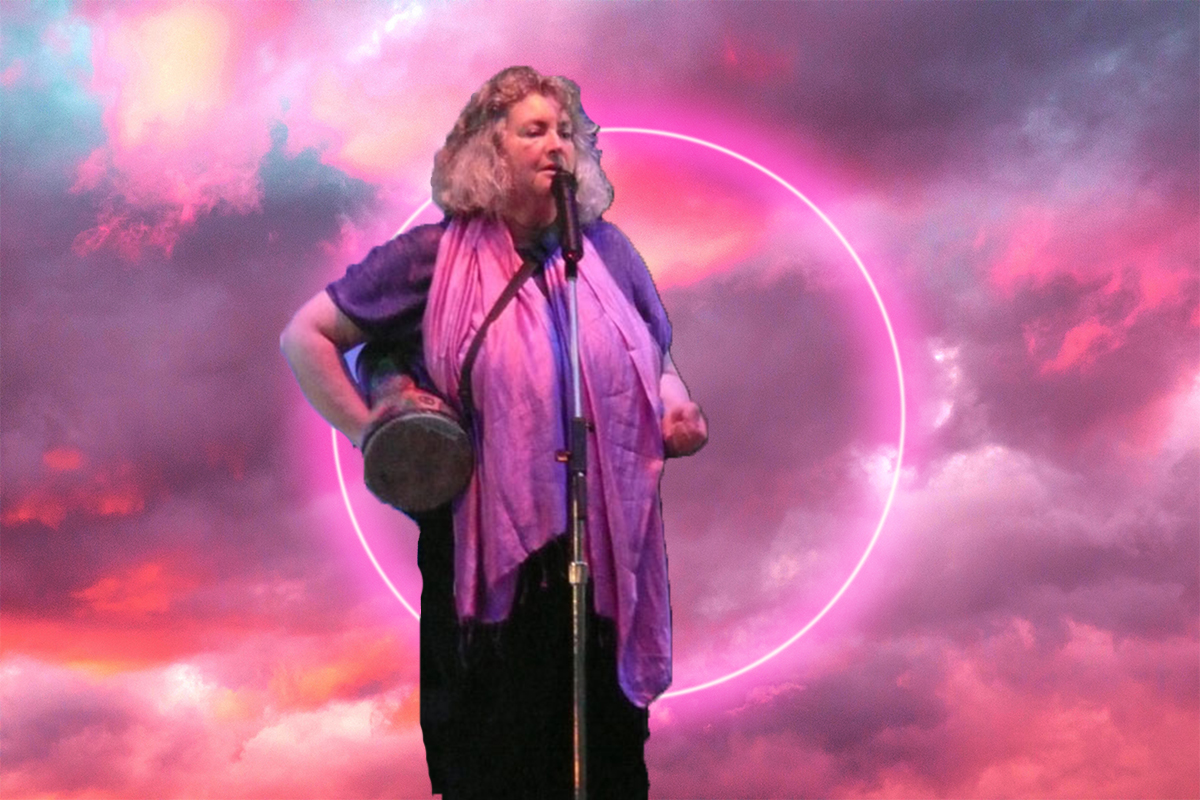In the 1960s, Miriam Simos asked herself a simple question about one of Judaism’s least-questioned holidays: Why do we celebrate Tu Bishvat in the winter? “I never understood why we were celebrating the ‘New Year of the Trees’ in February,” she recently explained to me. As a young woman living in Duluth, Minnesota at the time, blossoming trees still were months away.
Miriam is now known as Starhawk, the leader of the Jewitch Collective in the Bay Area. Through her life as a California “Jewitch,” Starhawk is finally able to connect the Jewish harvest holidays with her lived experience. “Tu Bishvat is generally right when the almond tree starts blooming. It’s the first of the fruit trees to bloom. Just like Jews who lived in Mediterranean land, it makes sense here in California.”
Starhawk has been a leading voice in Goddess worship and earth-based spirituality for over 40 years. She is an expert on ecofeminism, permaculture, and activism, and has authored 13 books including The Spiral Dance: A Rebirth of the Ancient Religion of the Great Goddess. For someone in her position in the pagan community, then, it may be surprising how much she still embraces her Jewish roots.
“There is a very ancient tradition within Judaism of Goddess worship. Original indigenous cultures from those lands lived in harmony with the earth and understood that spirituality and sacredness are rooted in the real things that make our lives — elements of life, living waters, the fertile earth, and the practices and behaviors that we need to keep them alive.”
Jewish holidays in particular speak to Starhawk and her connection to earth-bound spirituality. “We look at how the Jewish holidays are rooted in the agricultural year and the practices of people who lived on ancient lands,” she explains. “In Judaism, there are a number of different ‘new years’ and a number of different harvest celebrations. Agriculture wasn’t just something you did one time during the year. You had a year-round growing season — the wheat harvest was in the early spring, the barley harvest, the fruit and vegetable harvest, the nut harvest in the fall. To me, Sukkot is a great celebration of fruitfulness.”
Beyond the celebratory nature of Sukkot, Starhawk also internalizes its more somber symbolism. It’s not coincidental, she says, that this is also the time of year when the rains come back… if we are lucky. In fact, on Hoshanah Rabah, the seventh day of Sukkot, we used to hold the Nisuch Ha’mayim, or water libation ceremony, during Temple times. Kohanim, Jewish priests, would lead the congregation, dancing and singing, towards a Jerusalem pool of water and pray for rain. This rain dance was said to be when God determined the rainfall for the coming year.
Today, Jews pay homage to this ritual by shifting from praying for dew to praying for rain during the daily Amidah prayer. For Starhawk, reverence of water is another way that living in California connects her to ancient agrarian Jews, waiting for the rains to bless their arid land.
Starhawk feels particularly close to the sentiment of gratitude in Judaism, and how nuanced blessings reflect hope and appreciation for the natural world. “One prayer I value a lot is the Shehechiyanu, the prayer that you say the first time you do something that repeats,” she said. “Yesterday, I said Shehechiyanu when I picked one of the first apples from my tree. I say it for the first rains of the season. While I create a lot of rituals for myself, it’s nice having something you can fall back on that is traditional and connects you to thousands of years of your ancestors.”
Starhawk suspects she might have been more involved with traditional Judaism had the environment she was raised in been more inclusive of women. “The Judaism I was raised in didn’t have a lot of roles for women except for wife, mother, and maybe chairwoman of the local Hadassah,” she admitted. “I might have become a rabbi, but it never even occurred to me that a woman could be a rabbi until feminists started challenging those things in the late ‘60s.” While she contends that the patriarchal hold over Judaism was one of the reasons she looked outside of it for spiritual connection, she recognizes the positive steps made in certain communities over the last few decades. “Mainstream Judaism has done a lot to open up and create more powerful roles for women. Over time that leads to change, even if there will be challenges from both within the tradition and from the edges.”
She holds a similar attitude toward those who believe in the inherent contrast between a monotheistic religion and paganism. People who think Judaism and Goddess worship can’t coexist “probably shouldn’t try to do both,” she explained. “The Rabbinical Judaism we know as mainstream reflects the winners of many internal conflicts and battles over liturgy and directions. I like to think I’m just returning to a more conservative brand of Judaism… before those radical rabbis went and wrote the way it is now.”
Despite her deep well of positivity, Starhawk does not pretend the world is perfect or even harmonious. Climate change, pollution, and general human greed are the greatest threat to our spiritual and physical survival, and according to Starhawk, those are the things we must fight for.
“The earth is in crisis. Anyone who considers themselves to be a person of faith, a person of ethics, must be a person who takes that responsibility to care for the earth and for creation. Every religion’s tradition has something in it that you can draw from that encourages us to be good caregivers for the earth.”
“To me, the core of Judaism has always been the call for justice,” Starhawk says. “That is inherent in what we need to do right now to heal and care for the earth. We can’t do it unless we do it from a basis of justice, and we can’t create justice for people if we don’t take care of the life force of the planet.”
Header image: Starhawk by Wisteria Community, Ohio. Background via Artur Debat/Getty Images.



